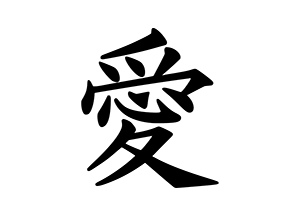IMPROVEMENT MADE SIMPLE
Total Quality Management, Six Sigma, Lean, Theory of Constraints, Agile, Scrum … which one(s) to use? Not knowing where to begin can be daunting, with several methodologies, dozens of principles and tools, and a stream of strange terms, it can seem complicated and overwhelming.
YOU SHOULDN'T HAVE TO WADE THROUGH MULTIPLE METHODOLOGIES OR LEARN A FOREIGN LANGUAGE TO IMPROVE.

While there will be new vocabulary, we communicate in a way that is easier to digest and understand. Many are still using foreign words from where they originated. All of the program labels and strange language tends to intimidate and sometimes alienate people.
The irony is that these methods can make work easy, but the way they are communicated can make understanding challenging. It does not have to be that way.
Let’s begin with the high-level methodologies. What they have all have in common is the improvement of process performance. While there are overlaps, the general focus and approach differ. Each method has strengths that should be included in a comprehensive improvement program.
TQM and Six Sigma tend to address quality by minimizing process variation. Six Sigma added a strong deployment model and a focus on delivering improvements aligned with the business strategies and validating the financial benefits from the results.
Some of the strengths include a structured roadmap, problem-solving tools, and the application of statistics to data analysis. Leadership is involved by approving projects from a queue of opportunities and assign a champion for each team project. Project facilitators are developed internally through training, typically two-weeks in duration. Representative team members are selected from each group that is involved in the process.
The Six Sigma methodology enables a rollout to take place in a relatively short time frame. The cross-functional team emphasis is well suited to complex processes that involve multiple disciplines departments. The use of data analysis allows complex testing and development of deep process understanding. The focus on dollars justifies long term sustainability.
Weaknesses include not engaging everyone in the organization to make small daily improvements within their work areas. Unless employees are on improvement teams, they can view the program as not impacting or benefiting them; therefore, a culture of continuous improvement may not be realized.
Lean and Theory of Constraints take a holistic view of the entire process and address creating flow across the value stream. There is emphasis on everyone making improvements every day.
There is also an emphasis on reducing process unevenness and problem-solving, but the approach is to enable people to apply their process knowledge and less on data analysis. The methodology added the fundamental principle of value and non-value adding activities and the identification of process wastes. A sharp focus is on minimizing wastes everywhere in the process, especially at constraints.
The foundation of the methodology is creating a culture of improvement by everyone involved in problem identification and waste elimination every day. Standard work is created by and for everyone, including leaders.
Employees are encouraged to improve things that get in their way of performing their value-added tasks (easing employee burden). There is less emphasis on validating the financial benefits of each improvement.
Potential weakness includes not having tangible financial benefits to justify the program. There is no standard program structure or rollout model. Initially, small localized improvements may not lower defects or reduce lead time.
The foundational principles originally developed and used in physical environments are now becoming mainstream in transactional and knowledge work environments.
Process improvement was initially developed for and has been associated with physical processes. Practitioners could see that the principles apply just as well to transactional processes. With the growth in the popularity of Agile and Scrum in the IT sector, knowledge workers have begun to understand the principles apply to them.
The rise in popularity of Agile in IT has engaged more companies and people in process improvement. Agile follows the principles of Lean and Theory of Constraints. It has demonstrated the benefits in the knowledge sector.
Weakness includes the un-necessary introduction of more terms for the same principles and tools. Also, the community has not adopted many of the tools of Lean. There was initially a split within practitioners in how to best conduct workflows.
A true blended approach to process improvement, combines a structured rollout model, cultural change, data analysis, financial verification, and all of the key principles and applicable tools.
HONOR HISTORY AND RECOGNIZE THE AUTHORS BUT TRANSLATE THE TERMS INTO UNDERSTANDABLE LANGUAGE.
The improvement practices associated with Lean have a very long history. The modern-day principles were codified and put into practice in Japan after WWII. Most practitioners continue to use Japanize words that introduce unnecessary difficulty in teaching and communicating.
Chaku-Chaku, Hanedashi, Heijunka, Hansei, Hoshin Kanri, Jidoka, Kaikaku, Poka Yoke, Gemba, Kata, Mizusumashi, Muda, Mura, Muri, Nagara, Shojinka, Yokoten
Really??? How are you going to remember, let along talk to your people using those terms?
Granted there are a couple of Japanese words that are so commonly used and don’t have direct English translations that their use makes sense. Everything else just introduces unnecessary confusion.
